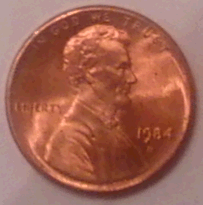|
ZINC POISONING


(original graphic by marvistavet.com)
RED BLOOD CELL DESTRUCTION
|

Microscopic View of a group of Red Blood Cells.
They have no inner structures
and are simply "bags of hemoglobin."
(Photo Credit: CDC Public Health Image Library)
|
Our story begins with hemoglobin, the iron-containing protein which binds oxygen in our lungs, carries it to our tissues, and releases it there. In mammals, the red blood cell is basically a small bag of hemoglobin. The red blood cell has no internal structures; it basically contains hemoglobin and transports it around the body. A normal canine red blood cell lives 120 days and dies when it either becomes too stiff to fold itself through the tiny capillaries of the circulation (and it simply bursts trying to do so) or it cannot generate enough energy to keep itself alive.
The spleen is responsible for removing old red blood cells. The spleen possesses many tortuous, winding blood vessels where red blood cells may break if they are not supple enough to pass through.
|
|
The spleen then collects the hemoglobin for recycling but since hemoglobin by itself is not safe for release into the bloodstream, a conversion is necessary. The hemoglobin is broken into a protein part (which is broken apart even further and recycled), iron (also broken off and recycled) and heme which is converted into a substance called bilirubin for transport. Bilirubin is sent to the liver to be chemically processed for removal (the process is called "conjugation"). This process enables the bilirubin to dissolve in water so that it can be excreted in bile and disposed of through the intestinal tract. Bilirubin is responsible for the brown color of feces.
If too many red blood cells are being destroyed at once, the systems described above get overwhelmed.
|
 (original graphic by marvistavet.com) (original graphic by marvistavet.com) |
WHAT IS HEMOLYSIS?
Hemolysis is the destruction of red blood cells. Red blood cells may be destroyed by:
- Immune-mediated pathways (in which the immune system treats red blood cells as foreign cells to be destroyed)
- The spleen’s pathways described above
- Parasites that live in or or on the red blood cell (such as Mycoplasma Haemofelis).
- Toxins such as zinc or copper
- Infections or tumors
When too many red blood cells are destroyed, the body’s mechanisms for processing hemoglobin are overwhelmed and bilirubin builds up. The patient's body tissues (especially gums and eyeballs) may be obviously yellow (“jaundiced” or “icteric”). The blood serum may be yellow when one checks a blood sample. If the blood cells are actually being destroyed in the blood stream (rather than in the spleen), the urine will turn red or rust colored. Hemoglobin is toxic to the kidneys and kidney failure is a strong possibility. Excessive hemolysis must be stopped.
ZINC
|
In 1982, the US Government began minting pennies made of zinc wafers coated in copper rather than out of pure copper. Canadian pennies minted after 1996 are also copper-clad zinc wafers. As it is not uncommon for young animals to swallow pennies (and other foreign objects), it was not long before zinc toxicity became recognized. Larger dogs (those over 27 lbs) seem able to pass pennies out their GI tract before toxicity results; a smaller dog's stomach cannot pass the coin and the zinc begins to leach off the coin in the acidity of the stomach. Zinc toxicity is mostly a problem for smaller breed dogs and puppies.
Other zinc sources include nuts, bolts, zippers, and zinc oxide based skin creams (such as diaper rash cream and sun screen). One may see a penny or other radio dense object of about the right size on a radiograph or there may be a known history of penny eating. It is important to rule out immune-mediated hemolysis as an alternative explanation as this is a common condition requiring specific (and very different) treatment.
|

This dog has swallowed a coin
(readily visible as a white disk in the stomach).
(Photo Credit: Jennie Marvelle, DVM
Boothbay Animal Hospital Boothbay, ME)
|
CLINICAL SIGNS
The clinical signs of zinc toxicosis include:
- vomiting
- diarrhea
- red urine
- icterus (yellow mucous membranes)
- liver failure
- kidney failure
- anemia
Vomiting and diarrhea generally precede the destruction of the red blood cells. How zinc is able to produce hemolysis is not known. With zinc-containing ointments, usually only stomach upset is seen after the ointment is licked but if the ointment is applied and licked regularly, full zinc toxicity can develop.
TREATMENT
If an object possibly made of zinc is seen on a radiograph, it should be removed promptly. This might involve surgery, endoscopy or possibly the induction of vomiting if the object does not have sharp edges. Support then becomes crucial. Fluid therapy is important to keep circulation to the kidneys adequate and help prevent failure. Transfusion may be necessary to combat anemia and anti-nauseal therapy is warranted. Zinc is very corrosive to the stomach so medication to protect the stomach will be needed and antacids are helpful to reduce the absorption of zinc (which is enhanced by stomach acid). Research is looking at methods for binding excess zinc in the circulation similar to the way lead poisoning is treated.
Once the zinc source is removed, most pets are able to recover within 48-72 hours with supportive care but, of course, this depends on the severity of the poisoning.

Page last updated: 3/11/2022
Page last reviewed: 2/17/2024
|